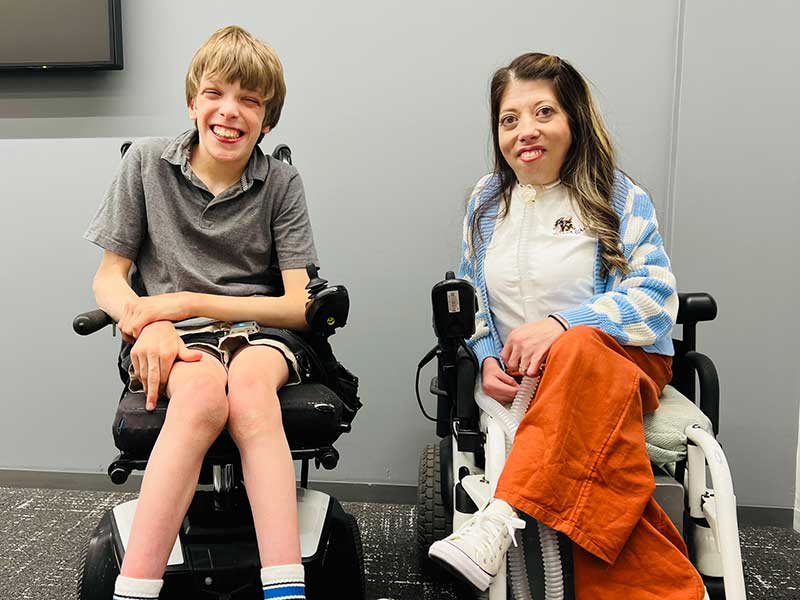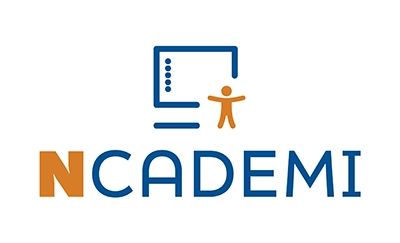The National Center on Accessible Digital Educational Materials & Instruction (NCADEMI) supports state and local educational agencies in delivering timely, accessible digital materials.
That’s a lofty goal. There are multiple steps between the people working to make it happen on the national level, and the learners who will ultimately benefit from NCADEMI’s mission. But spend some time with those learners, and you will see how badly it is needed.
I recently interviewed Drake and Andy Becker. Drake is a high school student in Utah who is working hard to receive the education and employment opportunities that will help him succeed after high school. Andy, Drake’s father, also spoke to NCADEMI.

At school, Drake needs a magnifier due to his low vision. He also needs some accommodations due to his difficulty with keyboarding. He’s been using assistive technology to convert speech to text, and last year he received a tablet with accessible apps and magnification. He can also use the tablet to take a picture of a document or worksheet, enlarge it and write on it. Drake said the technology has helped him complete his work.
But the process of receiving the tablet was anything but smooth. “We were waiting for months to get my iPad,” he said.
“We had thought we had figured out a solution,” said Andy. Drake’s individualized education plan (IEP) had identified a tablet as a solution to some accessibility needs. Though he used a magnifier at the school, it wasn’t portable, so the tablet seemed a good fit. “He could take it different places if he needed to,” Andy said. “That seemed great. And it seemed like something that we were going to get pretty quickly. But instead, we waited an entire semester before he actually received that iPad.”
Andy said it wasn’t entirely clear why it took so long, but part of it was figuring out how to adapt it to Drake’s needs.

“Once I got the iPad from the district,” Drake said, “They were like, ‘We don’t know how to use it.’” Drake felt it was largely up to him, his teacher and his aide to figure it out.
“I guess it’s another tool in the box for him to access the curriculum,” Andy said. “But it’s not really the end all and be all that we had hoped.”
Drake is just one of an estimated 7.5 million children with disabilities receiving special education services, or 15 percent of the overall national school population, according to National Center for Education Statistics (NCES) figures from the 2022-23 school year. What’s more, digital educational materials are becoming more and more common; districts in 2022-23 reported using 2,591 educational technology tools on average.
A common misperception is that “digital” means “accessible.” Digital educational materials can range from curriculum purchased from vendors to the documents teachers generate on their own. They also include websites used by the schools. According to WebAIM, the most common accessibility error on websites is simply low color contrast. Another common error is missing alt text on images, which provide text descriptions of visuals for screen reader users. And many digital content creators don’t use headers, making it difficult for users of various assistive technologies to navigate.
But for Andy and his family, a big hurdle is just knowing what their options are. “It’s really been a huge learning process for us to understand what is available. … What kind of technologies, what kind of equipment he can use so he can, on day one, be ready to go.”
Because many learning materials are brought into the schools without a policy to ensure they are accessible, professionals in the schools are often spending time troubleshooting and adapting them to the needs of their students. The teachers and support staff who work with students with disabilities are already stretched thin. More than half (53 percent) of public schools reported their schools were understaffed entering the 2022-23 school year. Of these schools, 65 percent reported being understaffed in special education teachers, according to NCES.

“Everyone who comes to Drake’s IEP meetings, or his individual education plan meetings, is well intentioned and can be a great resource,” Andy said. “But when there are new technologies or ways to enhance or amplify what he’s trying to do, or [help us know] what may be available to Drake, oftentimes it really feels as if we’re just sort of spitballing or brainstorming in the middle of a two or three hour meeting.”
For Andy, the real takeaway is not just that Drake is guaranteed a free and appropriate public education via the Individuals with Disabilities Education Act (IDEA). It’s that students like Drake truly want the education they’re entitled to.
“There are many of these kids that really want that education, that are craving that education,” he said. “We are selling them short and selling ourselves short, I think, as a state, as a society, as a country, if we’re not giving them the opportunities to excel and to be contributing members of our cities, our states, our world.”
Drake was a summer intern at the Institute for Disability Research, Policy & Practice, where NCADEMI is housed. Drake’s enthusiasm was infectious. He was remarkably engaged as he conducted interviews for social media and co-facilitated a class focused on employment for people with disabilities.
Resources
To help your state or local education agency offer accessible materials, try these:
To receive updates and additional resources, visit our resources page and sign up for our newsletter!

Leave a Reply